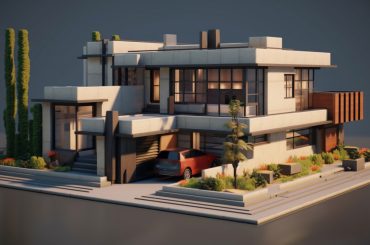In today’s world, people talk a lot about making things “green” and “eco-friendly.” But what if buildings could be like nature, working together with the environment? That’s where Organic Architecture comes in. It’s not just about making buildings look nice; it’s about making them kind to our planet. In this article, we’ll dive into the exciting world of Organic Architecture, learning about its ideas, history, famous architects, and its bright future.
What is Organic Architecture?

It is a fancy term for a design style that wants to connect buildings with nature. It’s like making our homes feel like they belong in the great outdoors. Imagine a house that looks and feels like it grew from the land it sits on.
Frank Lloyd Wright: The Trailblazer
Think of Frank Lloyd Wright as the superhero of organic architecture. In the early 1900s, he showed the world that buildings could be best buddies with nature. He believed buildings should be one with the environment, and his designs proved it.
Principles of Organic Architecture

1. Buildings That Make Sense
This architecture says buildings should be designed to do their jobs well. If it’s a house, it should be great at being a home. If it’s a school, it should be excellent for learning. This way, they don’t waste space or materials.
2. Working with Nature
Organic architects want buildings to fit perfectly into their surroundings. They use materials from nearby and build in ways that match the land. This makes our planet happy because it doesn’t harm nature.
3. Natural Materials Rock
Instead of using artificial stuff like plastic, organic architects choose materials like wood, stone, and glass. These materials look fantastic and are much friendlier to our Earth.
4. Saving Energy
Organic architects are like energy-saving champions. They design buildings that use the sun’s warmth to stay cozy and the wind’s breeze to keep them fresh. This means less electricity and a more minor impact on our environment.
Notable Examples of Organic Architecture
1. Fallingwater by Frank Lloyd Wright
Fallingwater is like a magical forest house built over a waterfall. It grew right out of the rocks and trees. It’s so cool because it’s like living inside nature itself.
2. Taliesin West

Imagine a house in the desert that stays cool without air conditioning. That’s Taliesin West. It’s built to fit the desert, using local rocks and clever designs to keep it comfy.
3. The Eden Project

The Eden Project in England is like walking into a giant bubble of nature. It’s a place where you can explore different environments worldwide, and it’s all under massive, clear domes.
The Future of Organic Architecture
1. Greener Communities
It is making whole neighborhoods greener. They’re adding more parks and making streets bike-friendly. It’s like creating cities that love nature as much as people do.
2. Cool New Materials
People are finding exciting new materials that are eco-friendly. Some are made from plants, and some can be 3D printed with less waste. The future will bring even more ways to build with nature in mind.
3. Buildings That Give Back
In the future, we’ll see more buildings that don’t just use energy but also make it. They’ll be like little power plants, producing as much energy as they use. That’s good for our planet and our wallets.
4. Bringing Nature Inside
Designers are making buildings feel more like being outside. They add plants and natural patterns to help people feel happier and healthier when they’re inside. It’s like having a piece of nature with you all the time.
Conclusion
It isn’t just for grown-ups who love fancy buildings. It’s about making the places where we live, learn, and play better for our planet. So, the next time you see a house that looks like it belongs in a forest or a school that feels like a garden, you’ll know that it’s not just pretty; it’s a step toward a greener, friendlier world. This architecture shows us that we can live and build in harmony with nature.
FAQ
Who started organic architecture?
It was founded by Frank Lloyd Wright. He believed in making buildings that blend with nature, and his creations showed how beautiful and functional nature-inspired designs could be.
What makes organic architecture unique?
It has some cool features. It has open spaces that flow smoothly, get ideas from nature for colors and textures, and make you feel safe from the weather. It’s also peaceful and not too fancy.
Can you give an example of organic architecture?
Sure! Fallingwater by Frank Lloyd Wright is a famous one. It’s built right over a stream and even has a waterfall. It’s like a perfect example of this architecture. Some other ones are Bavinger House by Goff and Glass Chapels by Jones. They’re all elegant!






